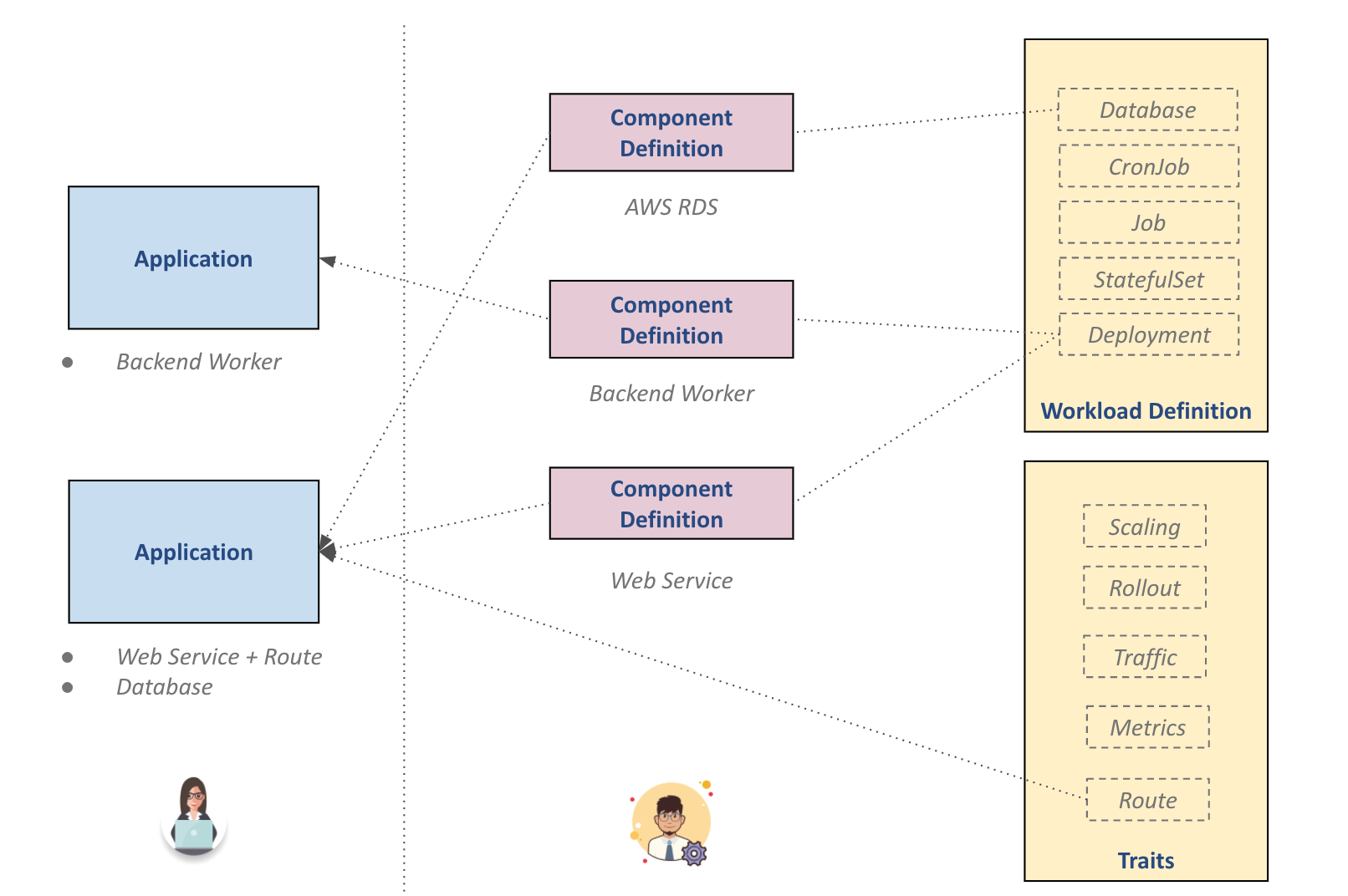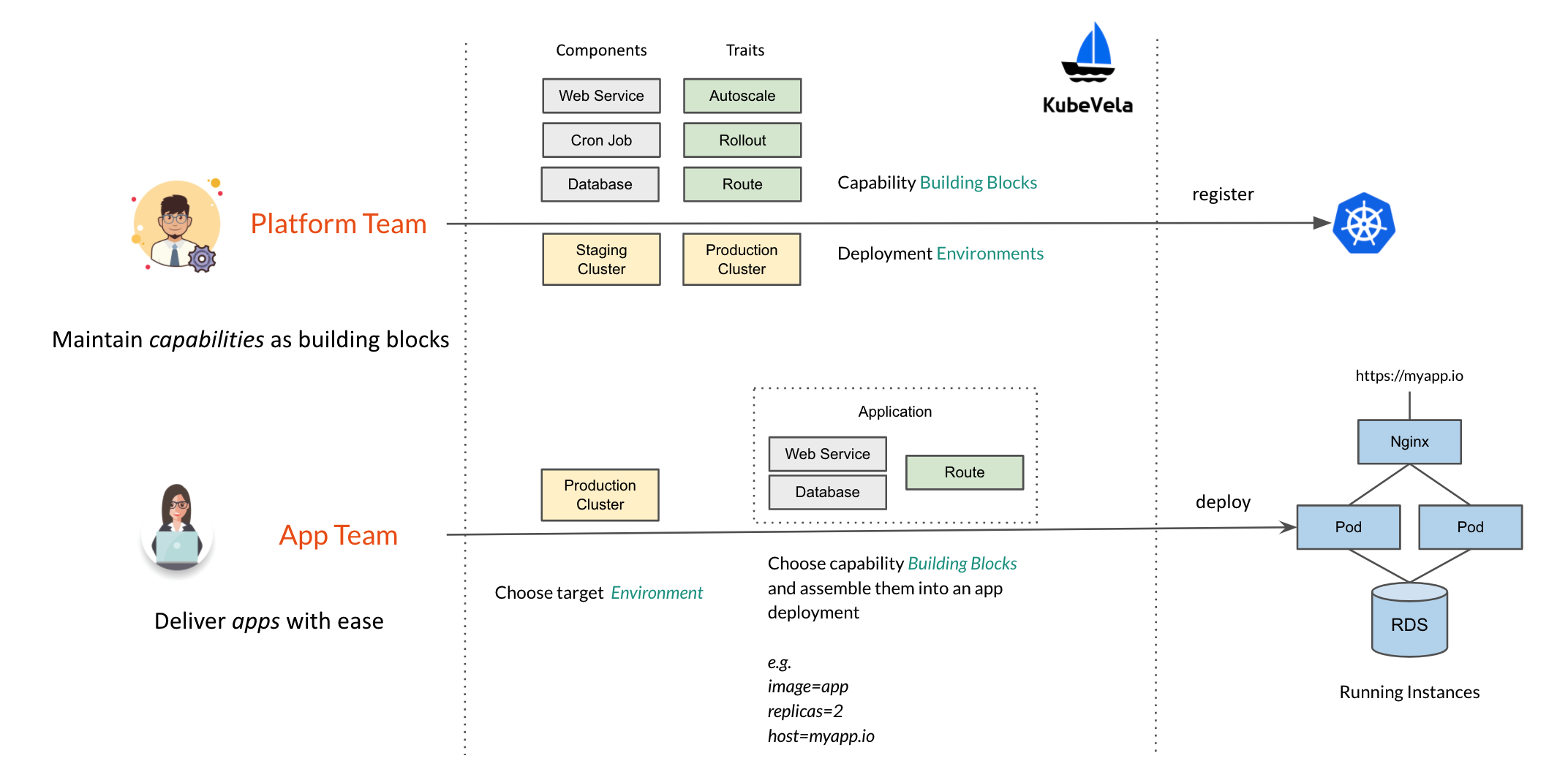How it Works
In this documentation, we will explain the core idea of KubeVela and clarify some technical terms that are widely used in the project.
API
On control plane, KubeVela introduces Open Application Model (OAM) as the main API to model a full deployment of modern microservices application. This API could be explained as below:

In detail:
- Components - deployable/provisionable entities that compose your application.
- e.g. a Helm chart, a Kubernetes workload, a Terraform module, or a cloud database instance etc.
- Traits - attachable features that will overlay given component with operational behaviors.
- e.g. autoscaling rules, rollout strategies, ingress rules, sidecars, security policies etc.
- Application - full description of your application deployment assembled with components and traits.
- Environment - the target environments to deploy this application.
We also reference components and traits as "capabilities" in KubeVela.
Workflow
To ensure simple yet consistent user experience across hybrid environments. KubeVela introduces a workflow with separate of concerns as below:
- Platform Team
- Model and manage platform capabilities as components or traits, together with target environments specifications.
- Application Team
- Choose a environment, assemble the application with components and traits per needs, and deploy it to target environment.
Note that either platform-engineers or End User application will only talk to the control plane cluster. KubeVela is designed to hide the details of runtime infrastructures except for debugging or verifying purpose.
Below is how this workflow looks like:

All the capability building blocks can be updated or extended easily at any time since they are fully programmable via CUE.
Environment
Before releasing an application to production, it's important to test the code in testing/staging workspaces. In KubeVela, we describe these workspaces as "environments". Each environment has its own configuration (e.g., domain, Kubernetes cluster and namespace, configuration data, access control policy, etc.) to allow user to create different deployment environments such as "test" and "production".
What's Next
Here are some recommended next steps:
- Learn how to deploy an application in detail and understand how it works.